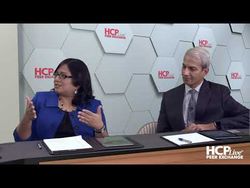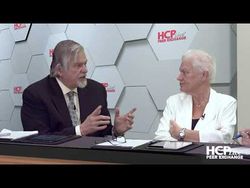Management of Beta Thalassemia - Episode 12
The Potential for Gene Therapy in Beta-Thalassemia
Peter L. Salgo, MD: Look, we’ve been dancing around gene therapy a bit. It came up several times already, so why don’t we just drill in on that a little. Where are we with that, the potential with gene therapy for beta-thalassemia?
Thomas D. Coates, MD: I think the first thing that needs to be said is that gene therapy is bone marrow transplant, but it’s bone marrow transplant with your own bone marrow that has been corrected. I think there’s been substantial progress made in the past several years on this. This is now being widely done in the United States. The cost is huge, but it appears to be effective. I mean, there are about 18 patients or so.
Maria Domenica-Cappellini, MD: Yeah, there are more than that. Actually, gene therapy has been approved in Europe but not here in the United States, by the FDA.
Thomas D. Coates, MD: But it’s submitted.
Maria Domenica-Cappellini, MD: But there are some comments we can make on that, because we didn’t mention that in bone marrow transplantation, there is a risk of graft-vs-host disease.
Peter L. Salgo, MD: I was going to ask that.
Maria Domenica-Cappellini, MD: Exactly. In the bone marrow transplantation, you are using the stem cells from a donor. Here, the patient’s stem cells are manipulated—harvested and then manipulated—which means they are transduced and transfected with a normal gene, which works. But the gene needs a driver. What is the driver? It’s a viral vector driver, and that’s the reason why it took more than 25 years to reach a point, because a viral vector is a risk in some way. Now it’s OK. But there are still some points to be clarified.
Peter L. Salgo, MD: So let’s talk. I’m sorry, go ahead.
Sujit Sheth, MD: There are a couple of differences between bone marrow transplant and gene therapy. So bone marrow transplant has to be somebody else’s bone marrow. It’s an allogeneic bone marrow transplant, whereas gene therapy is autologous, which means that don’t have to worry about matching. This can be offered to anybody.
Peter L. Salgo, MD: It’s you.
Sujit Sheth, MD: It’s you. Second, the chances of rejection and graft-vs-host disease are so low or nonexistent.
Peter L. Salgo, MD: It should be 0 theoretically, right?
Sujit Sheth, MD: Theoretically. Therefore, you don’t need that immunosuppression for 6 months or a year after the transplant because it is your own bone marrow. So you’re opening access to anybody whether or not they have a donor available, because it’s your own. And you reduce the complications that could be associated with an allogeneic transplant. The only thing we don’t really have a good handle on is durability at this point, because we have data now that go out about 5 years, and patients have been quite stable.
But the question remains, we know from allogeneic bone marrow transplant—we can say now because, as Nica said, the first 1 was done in 1981. We have 40 years’ worth of data. We can say that if you engraft successfully and it’s a stable engraftment, then you are actually cured and you’re done. You’re not going to—very few people lose their grafts later on. Whereas, with gene therapy, we don’t know whether the viral vector will wane over time, whether your stem cells that have been transfected will, at some point, be exhausted or not.
Maria Domenica-Cappellini, MD: No, we don’t know, and we need time to look. The only point that remains for gene therapy still unsure is the condition. Because the patient has to be conditioned. And to my experience, gene therapy was something easier. When they understand that, they have to go through the process of ablation of the bone marrow; they are not so comfortable. I’m positive gene therapy will change.
Farzana Sayani, MD: I think also there’s the concern of fertility.
Thomas D. Coates, MD: Yes.
Farzana Sayani, MD: We still have that with bone marrow transplant.
Maria Domenica-Cappellini, MD: Of course.
Farzana Sayani, MD: And the same thing applies.
Peter L. Salgo, MD: Why is that?
Farzana Sayani, MD: Because of the conditioning regimens. Fertility may be a big concern.
Transcript edited for clarity.



